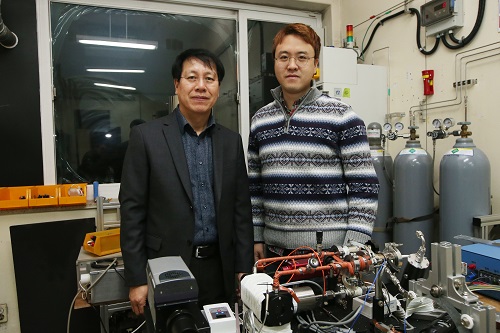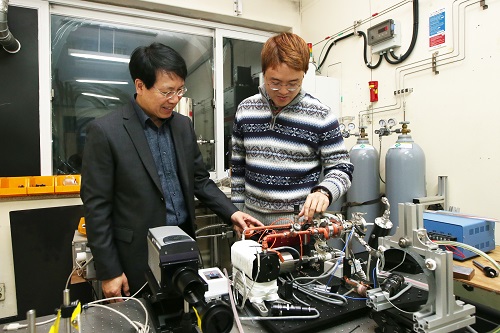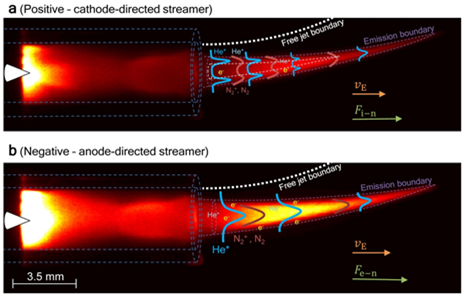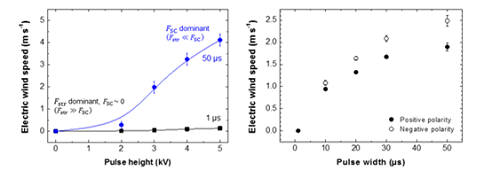2018-03-07





From left: Professor Choe, Wonho and Ph.D. Park, Sanghoo
Professor Choe, Won Ho's team identified the basic principle of electric wind in plasma. This finding will contribute to developing technology in various applications of plasma, including fluid control technology.
Professor Choe, Won Ho from the Department of Nuclear and Quantum Engineering and his team identified the main principle of neutral gas flow in plasma, known as ‘electric wind’, in collaboration with Professor Moon, Se Youn’s team at Chonbuk National University.
Electric wind in plasma is a well-known consequence of interactions arising from collisions between charged particles (electrons or ions) and neutral particles. It refers to the flow of neutral gas that occurs when charged particles accelerate and collide with a neutral gas.
This is a way to create air movement without mechanical movement, such as fan wings, and it is gaining interest as a next-generation technology to replace existing fans. However, there was no experimental evidence of the cause.

To identify the
cause, the team used atmospheric pressure plasma. As a result, the team
succeeded in identifying streamer propagation and space charge drift from
electrohydrodynamic (EHD) force in a qualitative manner.
According to the
team, streamer propagation has very little effect on electric wind, but space
charge drift that follows streamer propagation and collapse was the main cause
of electric wind.
The team also
identified that electrons, instead of negatively charged ions, were key
components of electric wind generation in certain plasmas.
Furthermore,
electric wind with the highest speed of 4 m/s was created in a helium jet
plasma, which is one fourth the speed of a typhoon. These results indicate that
the study could provide basic principles to effectively control the speed of
electric wind.
Professor Choe said,
“These findings set a significant foundation to understand the interactions
between electrons or ions and neutral particles that occur in weakly ionized
plasmas, such as atmospheric pressure plasmas. This can play an important role
in expanding the field of fluid-control applications using plasmas which
becomes economically and commercially interest.”
This research, led by Ph.D. Park,Sanghoo was published online in Nature Communications on January 25.


The differences in
electric wind speeds and voltage pulse